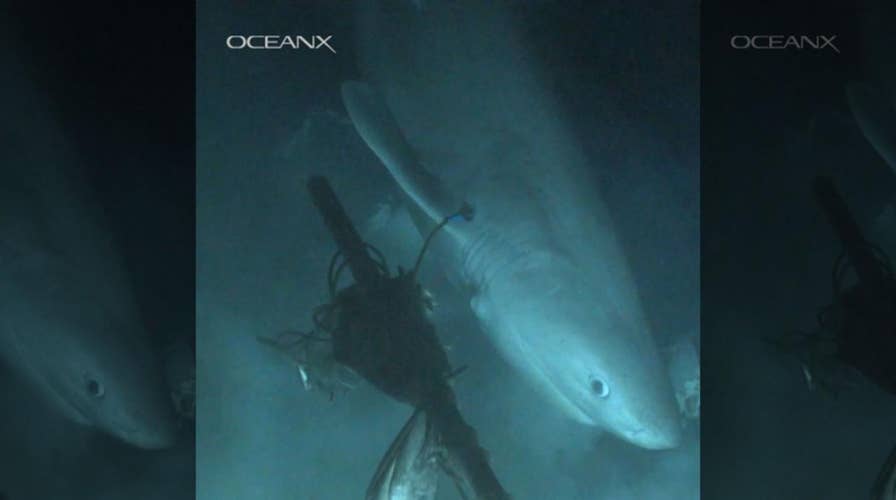Mysterious deep-sea shark that's older than the dinosaurs captured on film
Mysterious deep-sea shark that's older than the dinosaurs captured on film
You may have heard of megalodon , the massive prehistoric shark, but what about the bluntnose sixgill? This enormous, ancient shark was lurking in the deep long before its extinct cousin — and still exists today at the bottom of the ocean. It's rarely seen even by scientists. But on a recent submarine dive shark expert Gavin Naylor caught amazing footage of one on camera cozying up to his research vessel, seeming to almost flirt and play with the vessel.
"I'm literally nose to nose with this animal," Naylor, who does research at the Florida Museum of Natural History, told Live Science, referring to his trip in a submersible.
Bluntnose sixgills are the oldest living shark lineage, said Dean Grubbs, a deep-sea ecologist at the Florida Museum of Natural History. Although Grubbs wasn't on board the submarine that night, the dive was part of his ongoing research on the behavior and biology of these sharks. [Photos: Orcas Are Chowing Down on Great-White-Shark Organs]
"This is like studying dinosaurs," Grubbs told Live Science.
More From LiveScience
In fact, the sixgill predates most dinosaurs — the species has been around for roughly 200 million years. Some scientists even believe they may have survived the largest mass extinction event, the Permian-Triassic, which killed 96% of sea life.
The 16-foot-long (4.9 meters) female sixgill was spotted about 3,250 feet (1,000 m) beneath the surface of the Atlantic Ocean, just off the Cape of Eleuthera in the Bahamas. She appeared to show off for Naylor, opening her massive mouth ("big enough to swim into," Grubbs said) and blinking huge blue eyes. She seemed curious about the submarine, Naylor said, nudging it with her nose.
"She was quite gentle," Naylor added.
That is, until she started tearing into the bait that was attached to the sub, shaking the entire vessel.
"They seem really slow and really graceful," Lee Frey, a deep-sea engineer who was piloting the submarine at the time, told Live Science, "but then, boy, when they go after a meal, they are just really powerful."
Naylor's dive was the fourth attempt during a mission to track down and tag a sixgill shark in its deep-sea environment — a tricky feat from the submarine.
Tagging a sixgill shark in its natural environment poses an unusual challenge because they live so deep in the ocean — between 2,500 and 3,500 feet (800-1,100 m) below the surface. In the past, researchers had pulled sharks to the surface to tag them. But that method didn't always paint a clear picture of shark behavior — after surfacing, the tagged sharks would act erratically. So the researchers equipped a vessel with a dart gun that could shoot tags at the sharks. If they succeeded, they would be the first team of scientists to successfully tag an animal from a submarine.
When Naylor saw this particular sixgill, it became clear that she was far too close to the research vessel to tag with a dart gun. But he wasn't about to miss a great camera shot. Luckily, a better opportunity to tag a shark arose later that night, when he spotted a male sixgill at perfect range; he pointed and shot.
The tag, which will track the shark's movement, will help Grubbs' team better understand the behavior of these seldom-studied prehistoric creatures.
The dive was part of an OceanX mission, an organization that conducts ocean research, sometimes alongside institutions.
- 7 Unanswered Questions About Sharks
- In Photos: Baby Sharks Show Off Amazing Ability
- Photos: Great White Shark Mysteriously Washes Up on a California Beach
Originally published on Live Science.
Editors Note: This article has been updated. An original version of the article stated that the researchers encountered the sixgill shark in the Gulf of Mexico. The correct location was under the Atlantic Ocean.

